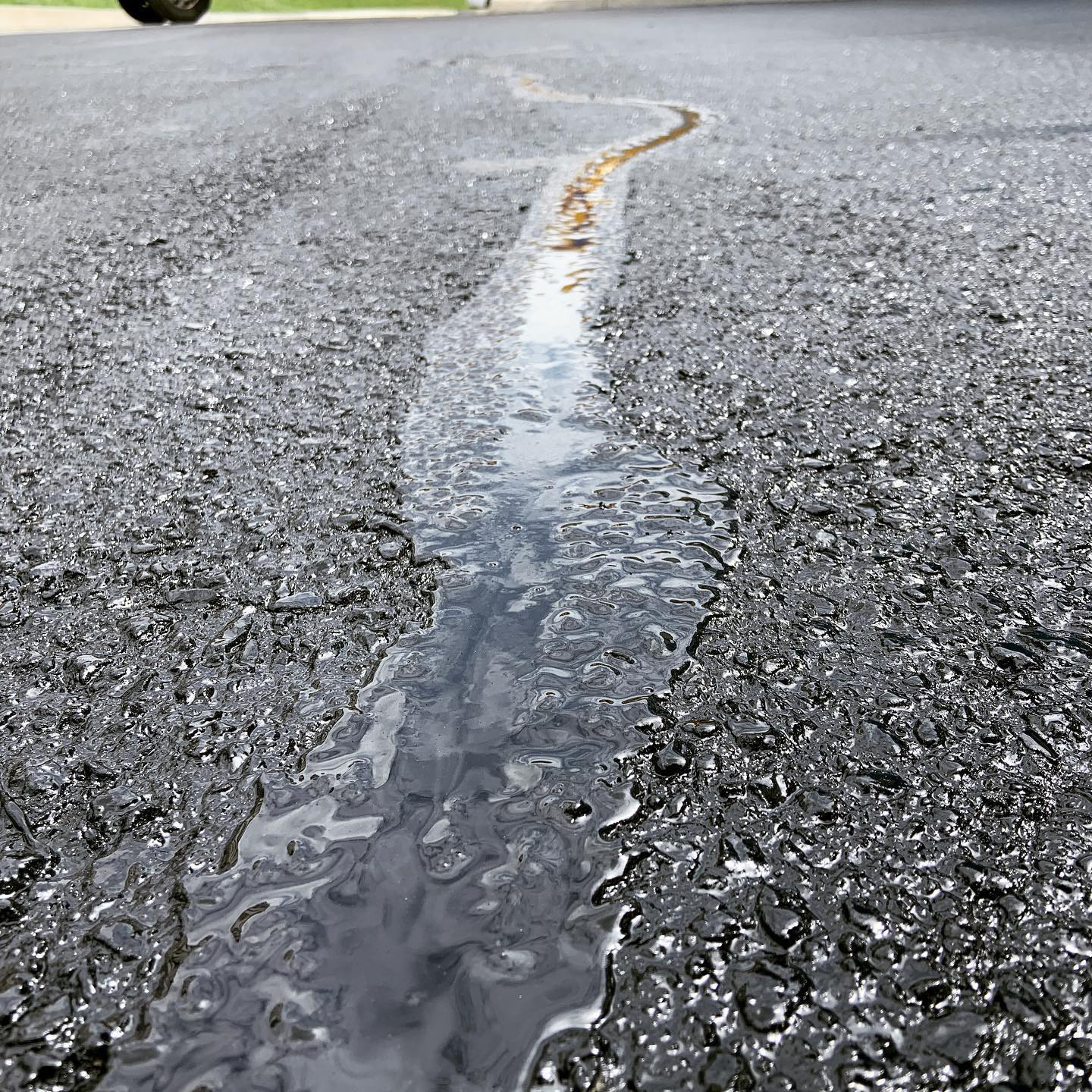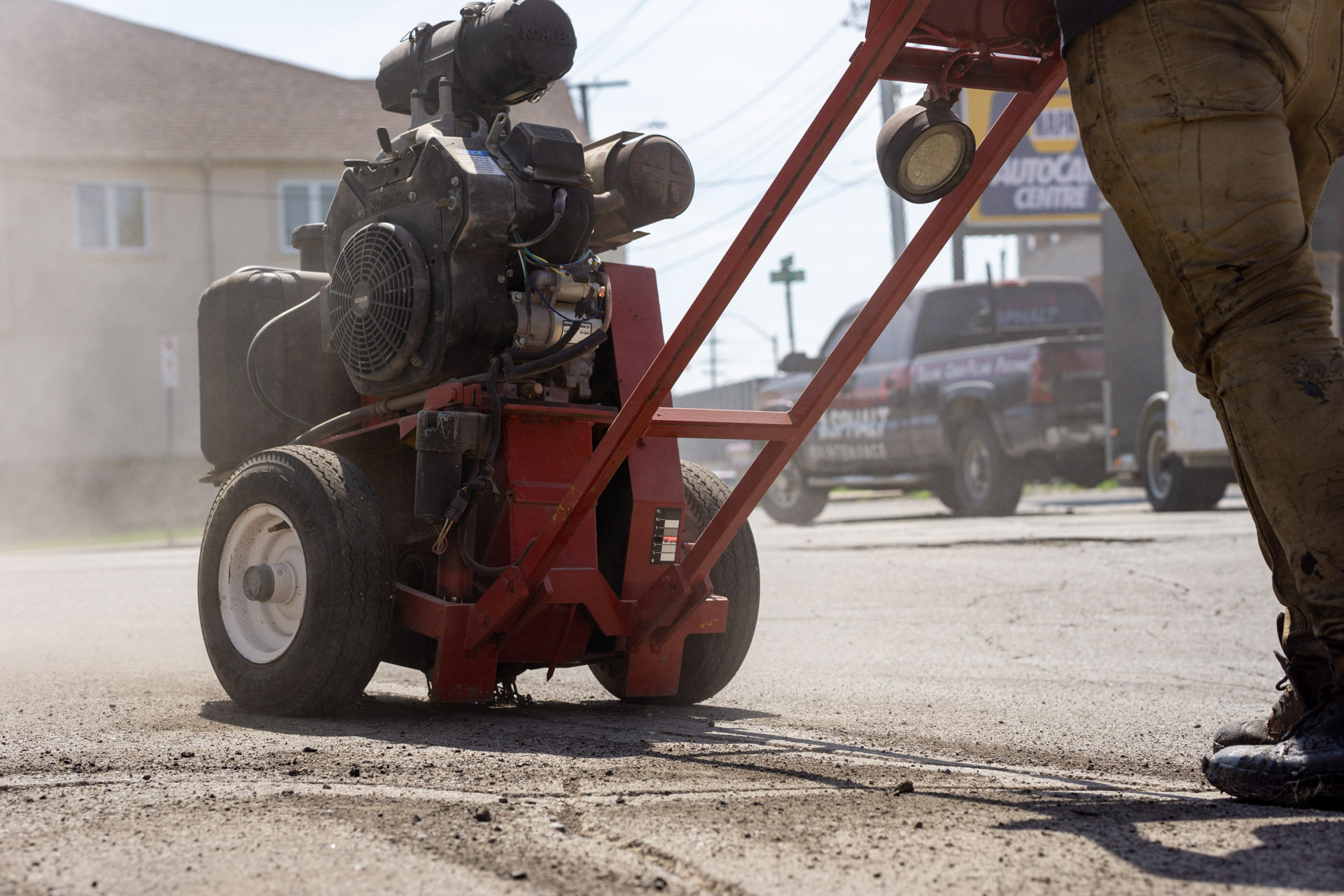
Crack Sealing
Free Onsite Consultation For your Crack Rout and Seal Project
What Is Crack Routing and Sealing?
Over the course of its lifespan, asphalt goes through many cycles of expansion and contraction. Once the asphalt loses too much of its elasticity, it cannot move without cracking. Cracking in asphalt is the most detrimental effect that can lead to irreparable damage, if left unaddressed. Routing and sealing the cracks in the asphalt is the best process to ensure the asphalt surface is protected from further damage. This process involves using a specialized piece of equipment called a crack router to grind open the crack, creating a reservoir large enough to hold a suitable amount of hot liquid rubber. Once the crack is routed open, hot liquid rubber is used to fill the crack and bind the asphalt together in order to create a water-tight seal.
Why Should You Rout and Seal Your Cracks?
Leaving cracks in the asphalt unattended will lead to much more serious issues. Cracked asphalt provides a clear path for water to penetrate the surface and wash away the foundation of the entire structure. This will result in further cracking and sinkage spanning a great distance from the location of the original cracking. The additional issues that arise from leaving the cracks unattended will carry a much higher repair bill than if the original cracks had been routed and sealed in the first place.



